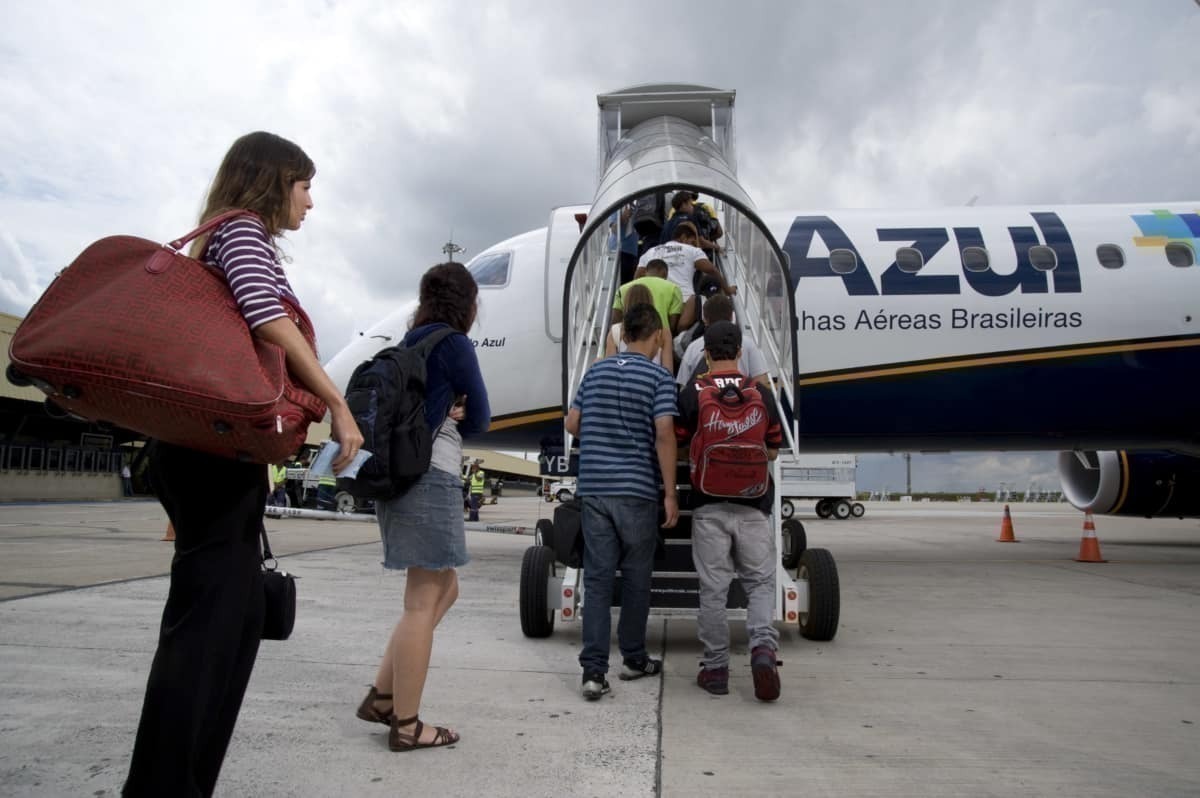The Brazilian airline Azul Linhas Aereas ended 2020 on a strong note. According to the carrier, it had the strongest recovery in Latin America, “flying more than 90% of our domestic capacity compared to the same period last year.” Abhi Shah, Chief Revenue Officer of Azul, explained today how this seemingly V-shaped recovery has been possible.

Why is this recovery possible?
Currently, Latin America is having a slow recovery from the COVID-19 crisis. According to the Latin American and Caribbean Air Traffic Association (ALTA), the industry was 54.8% below its pre-COVID numbers by November. Nevertheless, three countries were driving up the recovery; Brazil was one of them (the others were Mexico and Colombia).
Still, the Brazilian market registered a 40.7% decrease in the number of passengers transported by November.
Fortunately for Azul, it has been the beacon of recovery in the Brazilian market. According to the Brazilian Government stats, in November, Azul was the largest carrier in the country. It transported 1.66 million passengers, while GOL registered 1.59 million and LATAM 1.52.
According to Abhi Shah, the recovery of Azul can be understood by looking at the airline’s five strategic aspects.

Stay informed: Sign up for our daily aviation news digest.
The route map
The first strategic point of Azul is its route map. The airline finished 2020 serving 113 destinations across the Brazilian market. At the lowest point of the pandemic, it only flew to 88 destinations.
Azul Linhas Aereas has no direct competitor on more than 70% of these routes, Shah said. Unlike GOL and LATAM, Azul relies on a point-to-point strategy. This means that instead of having one big hub (for example, Sao Paulo or Rio de Janeiro), it can operate from any competitive Brazilian city and connect it with other towns in groundbreaking routes. Shah said,
“Our network advantage (is that) we’re alone in such a big part of our network. I don’t have to worry about my competitors matching my fares. I don’t have to worry about my competitors adding a flight on top of me. You sort of control your own destiny a little bit. And you also have access to demand that is your demand.”

The cargo business
Additionally to the passenger business, Azul has strengthened its cargo division. By November, it was the third most important cargo airline in Brazil, behind LATAM and Absa. The airline even converted four Embraer planes into cargo to surf through the cargo market’s strengths in this current environment.
Currently, due to the crisis, around 20% of Azul’s revenue came from cargo operations. In an interview with CAPA, Shah added,
“We threw a lot of assets at the cargo problem. Brazil is a huge country where logistics are very difficult. Like everywhere else in the world, Brazil had a cultural shift to e-commerce. So our cargo market share was 19% pre-crisis and is now 32%. It’s all about leaning on your competitive advantages at a time like this.”
So, instead of transporting pallets, Azul is carrying all the stuff that people buy online, handling individual packages from door to door.
Onboard service and the Brazilian market growth
In October, we wrote about Brazilian domestic fares falling 18.5% due to COVID-19. Despite its low-cost origins, Azul had the most expensive fares in the country. But this difference has not affected the airline, which is still thriving in the COVID-19 environment.
Shah stated that they’ve helped grow the Brazilian market through its onboard service, which comes at a cost. He said,
“Azul actually has the highest fares in Brazil. I’d love to have lower fares. But what we found is that it’s more sustainable to grow the market for us, to grow the market through service, because you’re creating new habits. You’re creating connectivity that didn’t exist. You’re creating convenience that didn’t exist.”
Additionally, Azul and the other two leading Brazilian airlines are confident about the domestic market. Before the pandemic, Brazilians were flying more than ever. Unlike mature markets like Europe and the US, Brazil still has to grow, a lot.

Fleet flexibility and LATAM’s codeshare
Azul has one of the most diverse fleets in Latin America. It has nearly 150 planes coming from different OEMs. For instance, it has Airbus A330, A321, and A320; Boeing 737; ATR 42 and 72, and Embraers 170, 175, 190, and 195. It also has a small fleet of Caravan aircraft for its newest commercial gamble, Azul Conecta.
For Abhi Shah, this diverse fleet is a blessing because it allows them to have trials and errors in terms of added capacity.
Finally, Shah talked about Azul and LATAM’s codeshare agreement. He said that while the deal was unexpected, Azul’s management thinking was that it would benefit the Brazilian market.
“It makes for a healthier industry. It certainly makes us and LATAM stronger. (The codeshare) gives us a really amazing portfolio of markets, routes, and options for our customers. And I think in the end, it’s good for Brazil because it allows capacity to come back faster.”
Have you ever traveled with Azul? How was it? Let us know in the comments.
[ad_2]
Source link


